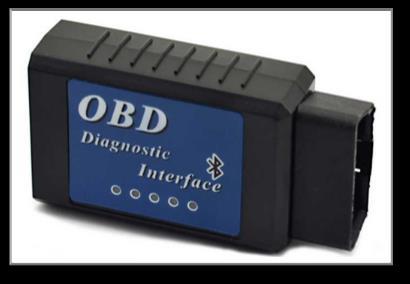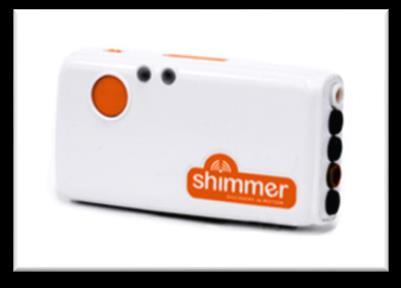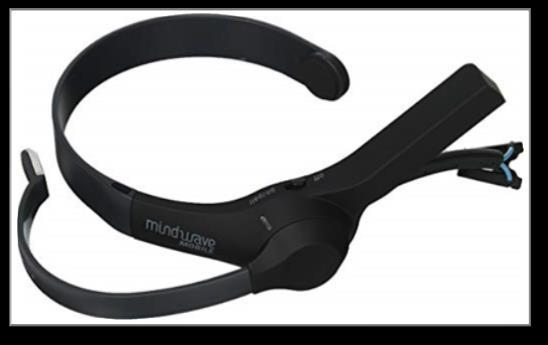ISSN 2348-1196 (print)
International Journal of Computer Science and Information Technology Research ISSN 2348-120X (online) Vol. 9, Issue 2, pp: (18-22), Month: April - June 2021, Available at: www.researchpublish.com

ISSN 2348-1196 (print)
International Journal of Computer Science and Information Technology Research ISSN 2348-120X (online) Vol. 9, Issue 2, pp: (18-22), Month: April - June 2021, Available at: www.researchpublish.com
Salem Garfan1, Abdullah Al-Amoodi2, M.A.Chyad3, Ghailan A. Al-shafeey4
1
Universiti Pendidikan Sultan Idris (UPSI); salem.garfan@gmail.com
2
Universiti Pendidikan Sultan Idris (UPSI); Abdullah_alamoodi@outlook.com
3
Universiti Pendidikan Sultan Idris (UPSI); Mohammed.chyad1@gmail.com
4Universiti Pendidikan Sultan Idris (UPSI); ggylin_alshifay@yahoo.com
Abstract: Increasing the number of road accidents and energy consumptions are major issues in many countries. Different researchers have utilize smartphone devices in their studies due to the embedded sensors included such as GPS, accelerometer, and gyroscope in order to reduce road accidents and improve safety driving. In the past few years, different studies utilize external devices connected to the smartphone in order to increase the variety of data collected for more accurate results. This paper presents an overview on different external devices were used in the studies of driving behavior.
Keywords: Driver Behavior, OBD, Wearable, Smartphone, Artificial Intelligence, IoT
Increasing the number of road accidents is a major issue in many countries due to the economic and social losses caused by traffic accidents Most of the accidents caused by the unsafe driving habits such as carelessness driving and over speeding. However, many people emerged to study driver behaviors in order to understand the causes of accidents in order to find possible ways to minimize car fatalities and improve safety driving [1].
Utilizing smartphone technology in studying driving behavior is constantly growing during the past years due to the widely availability and the high penetration of smartphones in the market. Moreover, smartphones are considered as low cost solutions which make them attractive target of researchers. Smartphone devices are suitable to collect the data due to the different types of sensors are included in the devices such as GPS, accelerometer, magnetometer, and gyroscope which make them good alternatives of the high cost solutions in conducting the studies [2]
Increasing the popularity and adoption of wearable devices such as smart-watches and fitness trackers encouraged researchers to use them in their studies along with the smartphone due to the sensors include in these devices which give the opportunity to extract more data from the driver for better behavior understanding [3].
OBD Devices

ISSN 2348-1196 (print)
International Journal of Computer Science and Information Technology Research ISSN 2348-120X (online) Vol. 9, Issue 2, pp: (18-22), Month: April - June 2021, Available at: www.researchpublish.com
OBD is stands for on board diagnostics which is described as a standard which provides an access to read the status of sensors of the vehicle via a port indicated to different sensors such as speed, coolant temperature, engine rpm, fuel rate and oxygen. OBD2 (OBD-II) is the upgraded version of OBD which is implemented in most of the lately manufactured vehicles [4]. There are different commercial adapters are able to read from the OBD2 port such as ELM-327 (which is shown in Figure 1), Munic box, and OBDLink MX. These adapters enable a connectivity between smartphones and the available electronic control units (ECUs) in the vehicle via Bluetooth, Wireless, or cable. The OBD adapters are used to read and extract information of in-vehicle sensors while the smartphone systems are used for collecting data of sensors, user interface, and data analysis which are used in driving behavior analysis such as speeding, braking, turning, and weaving. Moreover, smartphone systems are able to detect road artifacts such as sand drifts and potholes, and accidents [5]
In this study [6], a smartphone driving assistant application was proposed to reduce fuel consumption and recommend drivers adapt eco-driving with the use of OBD2 with the smartphone and artificial intelligence algorithms. OBD adapter is used to collect information about vehicle speed, engine load, engine speed, throttle position, mass air flow, and travel distance. The proposed system predict of driving behavior and alert the driver to adjust the speed or avoid inefficient driving and gives the optimum average speed. The system also recognize the traffic signs to alert the driver if any deceleration or stopping is needed. It also detects traffic incidents.
In a study of [7], a real-time intelligent vehicular telematics system was proposed that based on OBD2 connected to a smartphone application software for vehicle driving safety. The OBD2 dongle used in this platform to real-time monitor vehicular sensors data (such as oxygen, water temperature, speed per hour, and engine speed) and send these information to the smartphone via Bluetooth. This can help identify some malfunctions in a vehicle which help driver to do the needed maintenance in order to ensure driving safety and reducing accidents. The proposed system also able to send the current status and the location of the vehicle automatically from the smartphone to a cloud server via the network to allow online service staff give the necessary assistance if the driver need immediately.
A real-time smartphone-based driver behavior monitoring system based on cloud-based vehicular data acquisition and analytics was proposed [8]. The ELM-327 (OBD-II) adaptor is used in the system to send the vehicle data (Oxygen, mass air flow meter, coolant temperature, battery voltage, engine oil temperature, and fuel rate) to the smartphone via Bluetooth. All the received data are processed and analyzed on the cloud by applying Artificial Intelligence algorithms for real-time reckless driving monitoring detection and driving anomalies detection.

A classification model for drivers based on OBD2 and machine learning algorithms was proposed to detect risk driving [9] ELM327 adapter was plugged to the OBD port to be used in the study to collect the vehicle data (vehicle speed, engine speed, engine load, and throttle position) and send them to the smartphone via Bluetooth. Then compile the data obtained from the OBD2 with the data obtained from smartphone sensors (speed, bearings, acceleration, and altitude) and process these data by applying Naïve Bayes (a machine learning algorithm) to analyze the driving behavior.
Wearable devices such as smart-watches, heart rate and mind wave trackers have been used in the last years widely due to their availability and the variety of sensors which give the ability to collect different types of data easily [10]. The design of wearable devices usually incorporate practical features and functions. Due to the physical objects of wearable devices that embedded with software, sensors, electronics, and connectivity to other devices such as smartphones to exchange data without requiring human intervention, they are considered as part of the internet of things (IoT) [11]. Figure 2: Shimmer3 Device
ISSN 2348-1196 (print)
International Journal of Computer Science and Information Technology Research ISSN 2348-120X (online) Vol. 9, Issue 2, pp: (18-22), Month: April - June 2021, Available at: www.researchpublish.com
ECG device (an example shown in Figure 2) is a wearable device used to collect electrocardiogram (ECG) signals via electro-code to calculate cardiovascular activity such as heart rate.
In a recent study [10], a smartphone-based lifelogging platform was developed to measure negative emotions (such as anger and anxiety) and their effects on the driver behavior during driving This platform used shimmer3 device along with a smartphone to obtain ECG signals then measure heart rate and hart rate variability, and store these data in the smartphone device. The lifelogging platform has been developed to obtain the vehicle speed from the accelerometer, cardiovascular data from the shimmer3, and photographs of the environment from the smartphone device. Then visualize the obtained information and illustrate the status of the driver on a map based on GPS location.
In this study [12], new methods were design to estimate the driving behavior based on the influence of the environment and activity information of the driver. In this study, polar H7 chest belt (shown in Figure 3) was used to collect heart rate data and send it to the smartphone via Bluetooth. The environment data and activity information about the driver are captured by two smartphones; one of them is to collect the low-level data of the driver (such as gyroscope and accelerometer data, GPS data, Google activity recognition, call and SMS log, environment noise, and screen state) placed in the car door to be able to collect door opening and closing data and the other.

In this study [13], a middleware architecture for VANET that aimed to improve driving experience and driving safety was proposed, and a real-time smartphone-based application was developed to detect the attention of driver while driving. The proposed architecture is monitoring the driver through the smartphone application by measuring the degree of attention based on the electroencephalogram (EEG) signals. Neurosky Mindwave mobile (shown in Figure 4) was used in the study to read the brain waves of the driver and send to via a Bluetooth to the smartphone. Based on the received EEG data, the application analyze the attention level of the drive and an alert system will be triggered if the attention was low. A clientserver communication was used in the study to receive the alarm of low level attention and broadcast a warning and emergency messages to the VANET in order to warn the nearby vehicles.

ISSN 2348-1196 (print)
International Journal of Computer Science and Information Technology Research ISSN 2348-120X (online) Vol. 9, Issue 2, pp: (18-22), Month: April - June 2021, Available at: www.researchpublish.com
A real-time wearable hand motion tracking system was developed in order to improve driving safety [14] The smartphone-based system “SafeWatch” detects if the driver is distracted or not by tracking if the hands are on or off the steering wheel. In this study, a smart-watch was worn in each wrist of the driver and send the accelerometers and gyroscopes data to the smartphone to analyze and classify driver hand gestures.
A study conducted on the influence of sound and haptic feedback from smart wearable devices on elderly drivers’ performance [15]. In this study, a prototype of sound and haptic feedback was made consists of arm strap for phone and a smartphone device in order to imitate a wearable device and simulate sound and haptic feedback onto the arm of the drivers. As a result of the study, smart wearable devices have the potential to improve driving performance effectively.
A smartphone-based tracking system for steering and driver has been developed [3] The system used the sensors of a wearable device to detect the hand movement and rest rotation of the driver for tracking steering wheel angle. The wearable device is able read the accelerometer, gyroscope, and magnetometer and then send the readings to the smartphone. Then the system classify whether the user is a passenger or a driver. If a driver is detected, the system then detects if the hand of the driver is on or off the steering wheel and at the same time it detects the steering wheel rotation angle.
In this paper, we have presented some studies that used external devices connected to the smartphone in studying and analyzing driving behavior. OBD and wearable devices can assist effectively smartphone devices and have the potential to be implemented more in the future studies of driving behavior for better understanding to find effective solutions with a low cost in order to reduce road accidents, reduce fuel consumptions, and improve driving performance and safety.
[1] G. A. M. Meiring and H. C. Myburgh, "A review of intelligent driving style analysis systems and related artificial intelligence algorithms," Sensors, vol. 15, pp. 30653-30682, 2015.
[2] P. Chaovalit, C. Saiprasert, and T. Pholprasit, "A method for driving event detection using SAX with resource usage exploration on smartphone platform," EURASIP Journal on Wireless Communications and Networking, vol. 2014, p. 135, 2014.
[3] C. Karatas, L. Liu, H. Li, J. Liu, Y. Wang, S. Tan, et al., "Leveraging wearables for steering and driver tracking," in Computer Communications, IEEE INFOCOM 2016-The 35th Annual IEEE International Conference on, 2016, pp. 1-9.
[4] M. Amarasinghe, S. Kottegoda, A. L. Arachchi, S. Muramudalige, H. D. Bandara, and A. Azeez, "Cloud-based driver monitoring and vehicle diagnostic with OBD2 telematics," in Advances in ICT for Emerging Regions (ICTer), 2015 Fifteenth International Conference on, 2015, pp. 243-249.
[5] N. AbuAli, "Advanced vehicular sensing of road artifacts and driver behavior," in Computers and Communication (ISCC), 2015 IEEE Symposium on, 2015, pp. 45-49.
[6] V. C. Magaña and M. Muñoz-Organero, "Artemisa: A personal driving assistant for fuel saving," IEEE Transactions on Mobile Computing, vol. 15, pp. 2437-2451, 2016.
[7] L.-B. Chen, H.-Y. Li, W.-J. Chang, J.-J. Tang, and K. S.-M. Li, "An intelligent vehicular telematics platform for vehicle driving safety supporting system," in Connected Vehicles and Expo (ICCVE), 2015 International Conference on, 2015, pp. 210-211.
[8] O. Alvear, C. T. Calafate, J.-C. Cano, and P. Manzoni, "Validation of a vehicle emulation platform supporting OBDII communications," in Consumer communications and networking conference (CCNC), 2015 12th Annual IEEE, 2015, pp. 880-885.
[9] L. J. Ming, I. K. Tan, and P. K. Hoong, "Classifying drivers using electronic logging devices," in Information and Communication Technology (ICoIC7), 2017 5th International Conference on, 2017, pp. 1-5.
ISSN 2348-1196 (print)
International Journal of Computer Science and Information Technology Research ISSN 2348-120X (online) Vol. 9, Issue 2, pp: (18-22), Month: April - June 2021, Available at: www.researchpublish.com
[10] C. Dobbins and S. Fairclough, "A mobile lifelogging platform to measure anxiety and anger during real-life driving," in Pervasive Computing and Communications Workshops (PerCom Workshops), 2017 IEEE International Conference on, 2017, pp. 327-332.
[11] J.-W. An, D. Moon, and D.-S. Cho, "Design of a Smartphone-Based Driving Habit Monitoring System," in Advances in Computer Science and Ubiquitous Computing, ed: Springer, 2015, pp. 861-866.
[12] M. Sysoev, A. Kos, J. Guna, and M. Pogačnik, "Estimation of the Driving Style Based on the Users’ Activity and Environment Influence," Sensors, vol. 17, p. 2404, 2017.
[13] A. Reyes-Muñoz, M. C. Domingo, M. A. López-Trinidad, and J. L. Delgado, "Integration of body sensor networks and vehicular ad-hoc networks for traffic safety," Sensors, vol. 16, p. 107, 2016.
[14] C. Bi, J. Huang, G. Xing, L. Jiang, X. Liu, and M. Chen, "SafeWatch: A Wearable Hand Motion Tracking System for Improving Driving Safety," in Internet-of-Things Design and Implementation (IoTDI), 2017 IEEE/ACM Second International Conference on, 2017, pp. 223-232.
[15] C. Natpratan and N. Cooharojananone, "Study of Sound and Haptic Feedback in Smart Wearable Devices to Improve Driving Performance of Elders," in Information Science and Applications, ed: Springer, 2015, pp. 51-58.